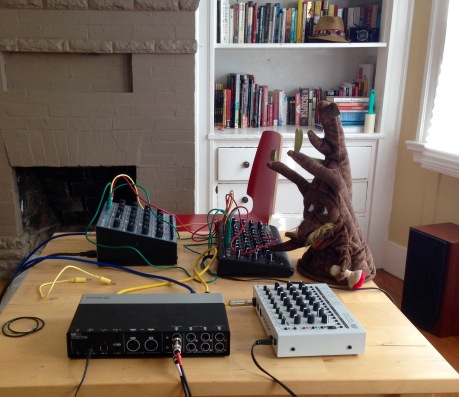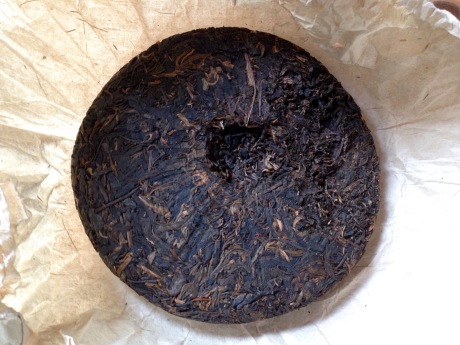A fama had a wall clock, and each week he wound it VERY VERY CAREFULLY. A cronopio passed and noting this, he began to laugh, and went home and invented an artichoke clock, or rather a wild-artichoke clock, for it can and ought to be called both ways.
This cronopio’s wild-artichoke clock is a wood artichoke of the larger species, fastened by its stem to a hole in the wall. Its innumerable leaves indicate what hour it is, all the hours in fact, in such a way that the cronopio has only to pluck a leaf to know what time it is. So he continues plucking them from left to right, always the leaf corresponds to that particular hour, and every day the cronopio begins pulling off a new layer of leaves. When he reaches the center, time cannot be measured, and in the infinite violet-rose of the artichoke heart the cronopio finds great contentment. Then he eats it with oil, vinegar, and salt and puts another clock in the hole.
Julio Cortázar
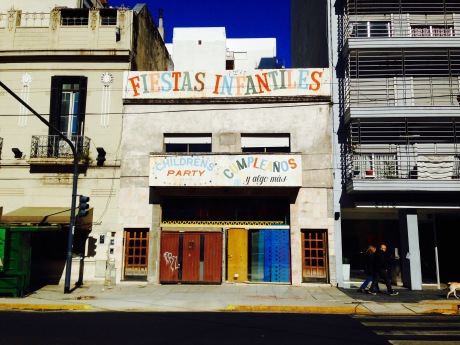
Buenos Aires is a city out of time. A place which seems to look to the past, be stuck within a certain slice of Iberia circa 1990, where steak and wheat is always on the menu, and which a gothic cemetery is among the principal attractions. It’s seen better days, but still seems to ride on its reputation as the “Paris of the south” (not much of an endorsement to me). So how about it?
Argentina is economically dysfunctional. Our Airbnb host, Diego, is an anomaly in Argentina—a quick moving entrepreneur who shrugs his shoulders when describing the byzantine difficulties of importing items into his country. Countless items that would arrive in two days to an American household can simply not be bought in Argentina, so he ships purchases to Brazil or Paraguay and moves them by land across the border, or buys electronics on trips to the US for use in his Airbnb apartments and brings them back himself. Inflation is 40% per year.
“We don’t really buy new clothes for several years,” shyly admitted his girlfriend Nati, a microbiome researcher.
Everyone changes money on the black market. The official exchange rate when we were there was around $8.5 pesos/$1 USD but the “blue dollar” hovered around 12.5. We traded our bills by asking the Chinese grocer next to us if he knew where we could change money, having been told he himself, of course, was a money changer.
“Yes, I can,” he said in Chinese, with merely a short glance.
Other money changers that had previously been open a week or two before were now shuttered.
One day Diego showed us a list of all the different unofficial exchange rates pegged by various institutions and rates. It was like looking at a multi-city bus timetable.
“The pink dollar, the blue dollar, then there’s the white rate..”

The military dictatorships are gone but tanks of books remain. It’s a literary city.
The Argentinean economic climate is a complex and longstanding matter, like the rhythms of fog in San Francisco,
“convoluted to the point of incomprehension,” said my friend Chris.
Like grey weather, there seemed to be a consistent gloom about many Porteños.
“You could be falling down in the street here and no would help you,” remarked Diego, whom, along with his girlfriend, is from the far Northeast, Misiones province, a short drive to Iguazu Falls.
Despite the large size of the city and its dense apartment buildings, I was often surprised by how dark it was at night. This lent an eeriness and occasional malice to the streets.
“Yes, they are empty, a lot of foreclosures,” Diego said, “Perfect for airbnb.”
My favorite anecdote from Diego concerned his attempt to start an online fishing rod business. Apparently fancy fishing rods are a big thing in Argentina, but like most of the economy, has typically been done in a traditional brick and mortar setting; he thought by doing an online business he could significantly cut costs and sell the rods for cheaper with the help of his brother. It seemed to be successful, but it didn’t last long; soon other fishing businesses were threatening him, asking him to raise his prices. They tried to find out his address, a deliveryman quit after fearing for his safety, and finally Diego and his brother decided it wasn’t worth it.
“Too easy to be killed here if someone wants you gone.”
No matter how sexy some people want to play up tango, beef, and dilapidated colonial buildings, constant inflation and a lack of security in one’s own currency are not great aphrodisiacs.
Not vegetarian-friendly or gluten-free
The Argentinean diet is pretty much steak, pizza, pasta, empanadas, and pastries. Tomatoes and peppers count as vegetables, there’s surprisingly little fruit given the relative proximity to subtropical climates, and plenty of Italian pastries.
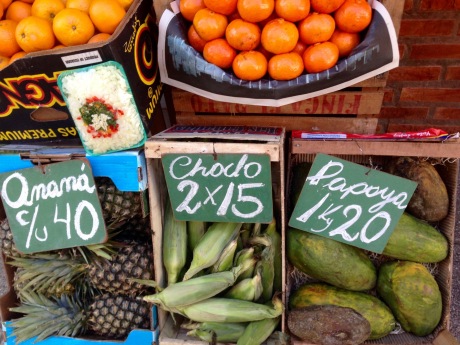
A misleading picture
And there’s gelato. The gelato is actually the best in the world I’ve come across, and deserves its own section, but for a non-meat loving gluten-free person, Buenos Aires sucks. Argentinean cuisine is unhealthy and I can’t imagine most locals possess a high diversity of intestinal microflora.
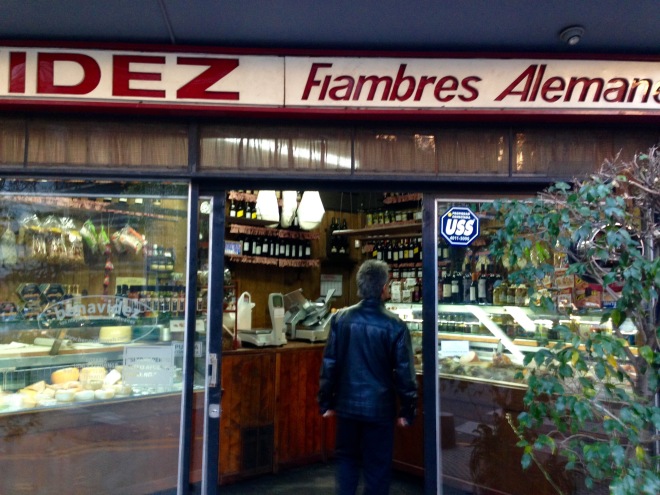
Spain, circa 1990? Lisbon 1996? Buenos Aires 2015?
Gelato from n-dimensional spacetime
What makes the gelato in Buenos Aires so good? Certainly it was one of the consistent highlights in an often-gloomy cityscape reminiscent of a Spanish or Portuguese city…25 years ago–right down to the mullets, faded coats, and 10 PM dinners. Most people didn’t even seem to bother coming out at night until 1 AM.
Our search for holy gelato led us to intense flavor and a particular creaminess that I have never seen in ice cream or gelato anywhere else. The texture was often vaguely reminiscent of soft serve frozen yogurt but much richer, and produced, I’m sure, by different mechanisms. The Pampas, infinite grazing ground for high quality cows is surely part of this, but is probably only a partial answer. We visited a few of the most acclaimed gelateria:
Volta, in Recoleta, with its sleek interior and hanging topiaries, would not be out of place in San Francisco, were it not for the somewhat old fashioned uniforms worn by the staff (a mark of better gelato places, we decided), and all gelato sold in styofoam containers in sizes up to a heart-shattering 2 kilograms. Each scoop was flavorful, creamy, and introduced me to that particular sticky quality unique to Argentinean gelato.
Jauja, was small and modern in the upmarket Palermo Soho neighborhood, with more casual and friendly staff, and we felt, more unique and even intense flavors than Volta. Also very creamy, but perhaps a bit too sweet. It had a local café feel to it, various middle-aged people in too many sweaters were talking in a heated manner in that 1990 Italian style. Very low tables.
Arkakao, saving the best for last, once again in Recoleta (that neighborhood of old wealth and slumbering hotel doormen we weren’t enamored with but couldn’t seem to escape), was like a fashion parlor cum gourmet café, an event onto itself. The staff certainly seemed to think so. Compared to many other places, this was one of the only that showed their gelato totally exposed in a refrigerated container (as is the norm in the US) rather than the submerged metal pots elsewhere in BA. Before going to Argentina, the Italian owner of a relatively new gelateria in Berkeley tried to convince me his use of these covered metal parts was part of the reason his gelato was supposedly superior to other offerings.
Clearly it is not the deciding factor. This was the best gelato I’ve ever eaten in my life. All flavors were intense, rich, extremely creamy, exactly the right amount of sweetness. If only we hadn’t waited to go until our last night.
No Camellia sinensis to save your life but plenty of yerba mate
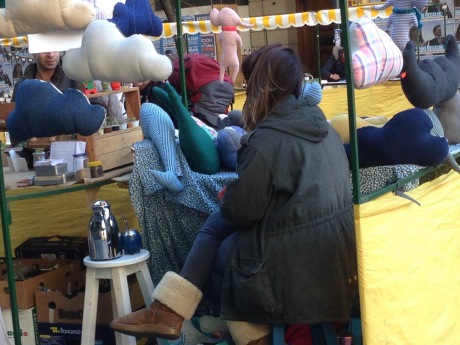
A street vendor with her mate and thermos.
Curing the mate is a delicate process. We picked up a nice one on our way out of the airport and then fretted for weeks that we were cultivating a new species of mold rather than a suitable vessel for brewing. I enjoyed this little leaf, a stimulating healthy green particularly valuable in a sea of morose concrete and car fumes (Buenos Aires has one of the lowest tree cover % per person of any major city in the world, less than hyper dense and developed Tokyo).
A homogenous city of mostly European descent
We saw virtually no one of African or Asian descent. Sometimes people, especially kids, stared at Cathy and called out, “chino!”
This ties in with the other strand of BA being a place stuck in the past in some similar but imagined continent—in its faded elegance, mirrors of other places that are sort of like what they purport to be, but not exactly, one can understand the forces that one foment a Borges, a labyrinth of self-similar parts and out of time quality that would appeal to a hermetically sealed writer. A Borgesian city.
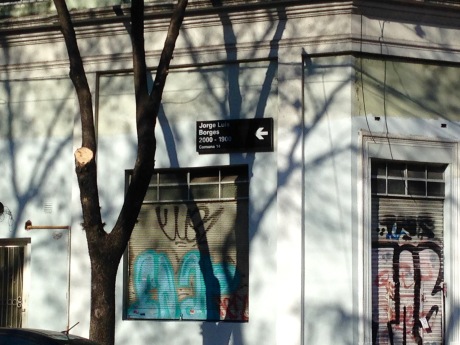
Some high quality street art interspersed with a lot of graffiti and dog poop
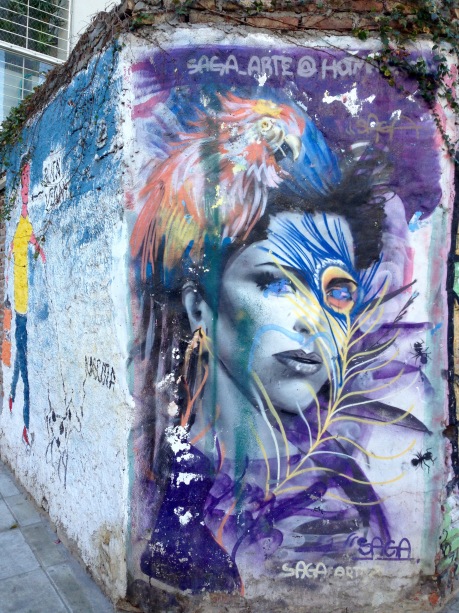
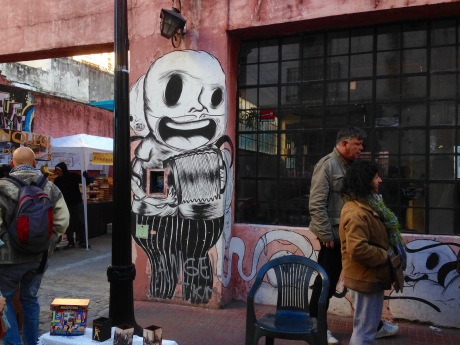

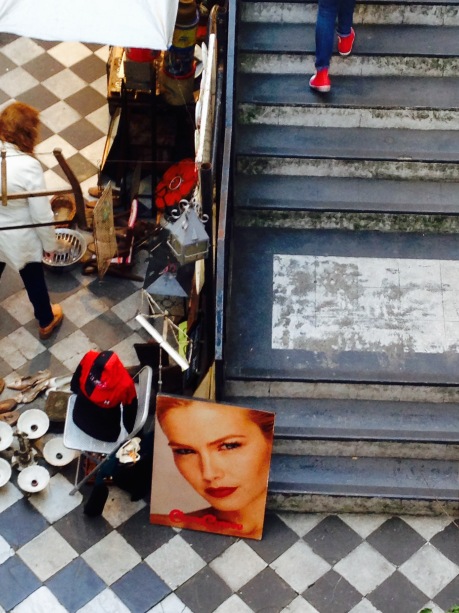
Not intended as art
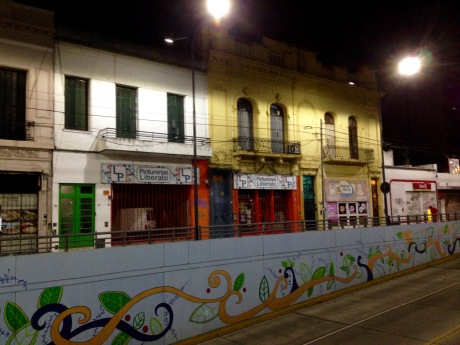
Western fringes of BA, where I practiced aikido one night
On our last afternoon we wandered through the famous Cementerio de la Recoleta, an imposing place of grandeur and one of the top tourist attractions in Buenos Aires. The contrast with the surrounding blocky apartments and a luxury McDonalds across the street couldn’t have been stranger, and I felt an intense heaviness from being in this Parisian simulacrum patrolled by endless mangy cats.
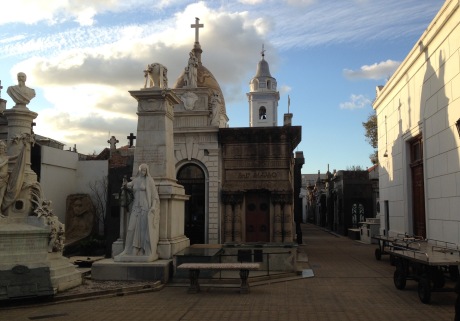
And then we went to Arkakao.
The best part of Buenos Aires?
Our wonderful Airbnb hosts, Diego and Nati! Seriously, we spent more time talking to them, sharing tea, enjoying delicious home made flan with dulce de leche, and eating steak than probably anything else we did in the city, especially on days when we didn’t leave the apartment until late afternoon (good luck going to bed before 2 AM).
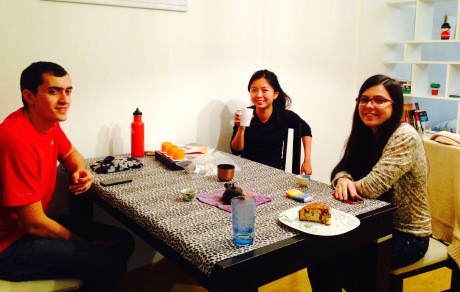
Gracias..but next time just take us to Misiones.
